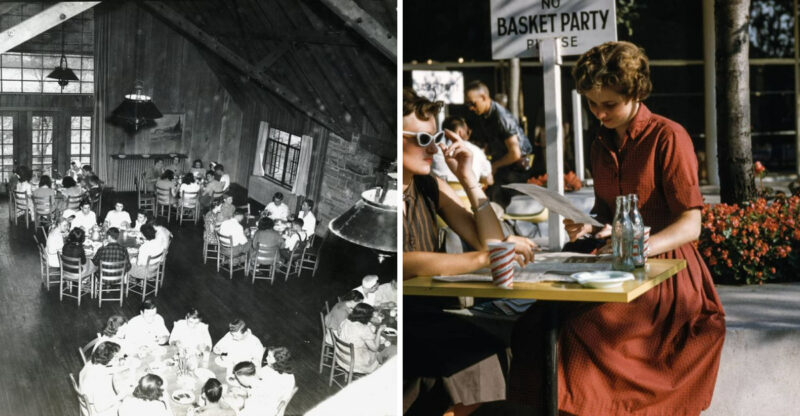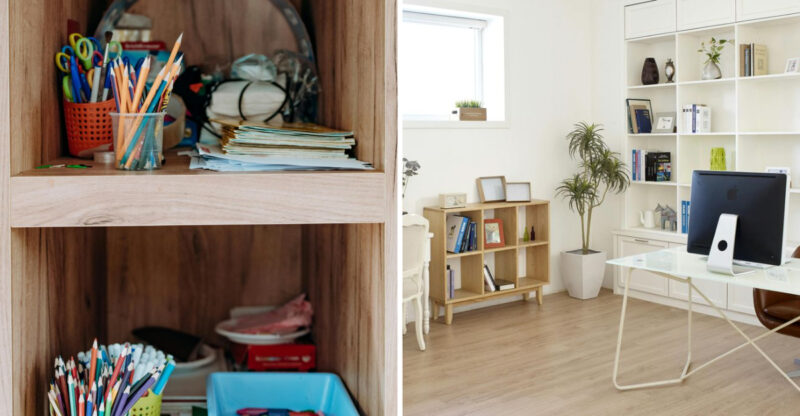12 Kitchen Eyesores Designers Can’t Stand (And 10 Features They Actually Love)
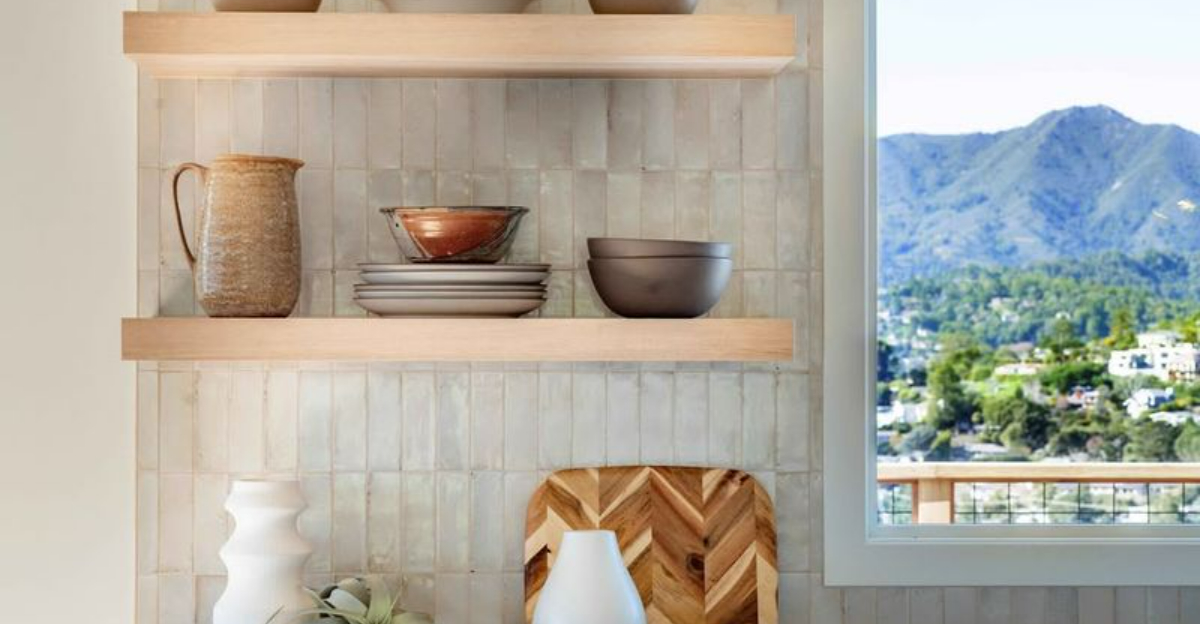
Your kitchen isn’t just a place to cook – it’s the heart of your home where memories are made and meals are shared.
Professional designers have strong opinions about what works and what doesn’t in this important space. I’ve gathered insights from top interior experts about the kitchen features that make them cringe and the elements they absolutely adore.
Let’s explore what might be dragging down your kitchen’s potential and what upgrades could transform it into a designer’s dream!
1. Outdated Oak Cabinets
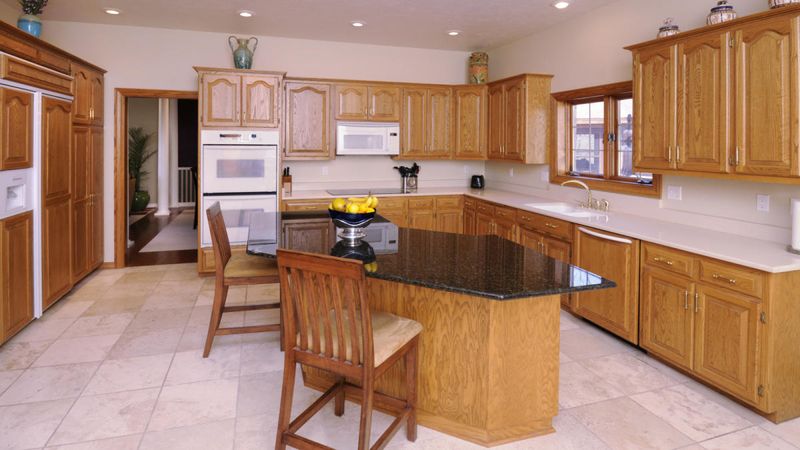
Those honey-colored oak cabinets from the 90s make designers wince on sight! The yellowish tone often clashes with modern color schemes and makes your kitchen feel stuck in a time warp.
A simple paint job can transform these dated cabinets into something fresh and current. White, gray, or even navy blue can breathe new life into your kitchen without breaking the bank.
If you’re not ready to part with wood tones completely, consider refinishing with a more contemporary stain in walnut or espresso.
2. Fluorescent Box Lighting
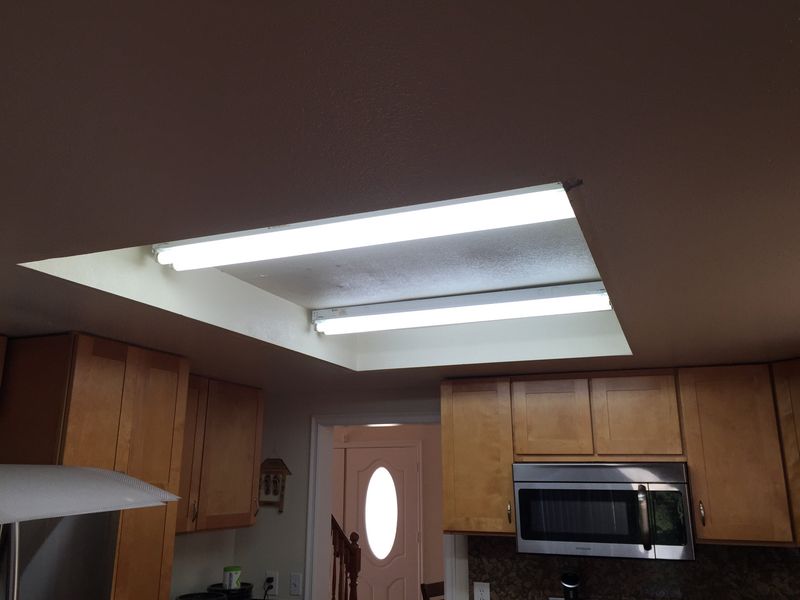
Nothing screams ‘office building’ more than those harsh, flickering fluorescent light boxes on kitchen ceilings. They cast an unflattering bluish glow that makes everyone and everything look sickly.
Modern pendant lights or recessed lighting can instantly elevate your kitchen’s ambiance. Even replacing the fluorescent fixture with a simple flush mount can make a world of difference.
Good lighting is about layers – task lighting under cabinets, ambient lighting overhead, and accent lighting to highlight special features.
3. Cluttered Countertops

Walking into a kitchen where every inch of counter space is covered with appliances, mail, and random items makes designers shudder. Counter clutter not only looks messy but also makes your kitchen less functional for actual cooking.
Consider which appliances truly deserve prime real estate on your counters. That bread maker you use twice a year? Store it away!
Creating designated zones for mail, keys, and other non-kitchen items helps prevent the daily accumulation of stuff that doesn’t belong.
4. Mismatched Appliances
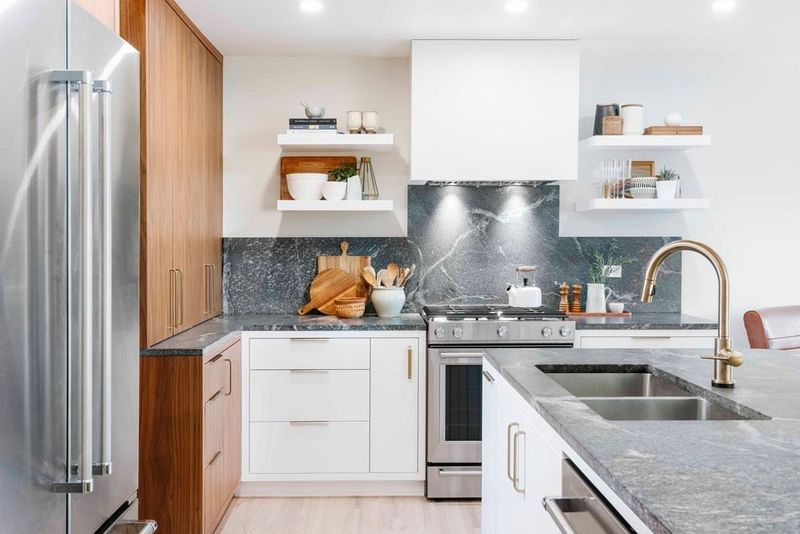
Have you ever seen a kitchen with a black refrigerator, white dishwasher, and stainless steel stove? Designers call this the ‘appliance rainbow’ and it’s high on their list of visual disturbances.
While matching all appliances is ideal, it’s not always budget-friendly. If you can’t replace everything at once, consider panel-ready options that can be covered to match your cabinetry.
Another trick is to embrace black or white across the board instead of trying to match specific stainless steel finishes from different brands.
5. Over-the-Range Microwaves
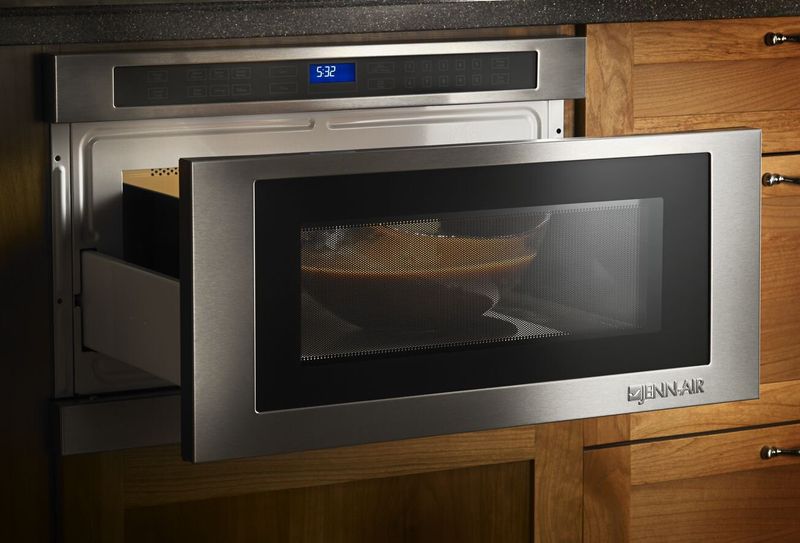
Designers are increasingly turning their noses up at the once-popular over-the-range microwave. These bulky boxes disrupt the visual flow of the kitchen and often aren’t properly vented for cooking odors.
Microwave drawers installed in lower cabinets provide the same function without the eyesore effect. They’re also more accessible for shorter family members and safer when handling hot foods.
If budget constraints make a microwave drawer impossible, consider a countertop model tucked into a cabinet nook or pantry.
6. Tile Countertops

Those small square tiles with thick grout lines that were popular in the 80s and 90s make designers cringe. The uneven surface catches crumbs, and the grout lines quickly become stained, discolored, and nearly impossible to keep clean.
Modern solid-surface options like quartz, granite, or even butcher block provide a smooth, seamless workspace that’s both more functional and more visually appealing.
If you’re stuck with tile counters for now, a professional grout cleaning and sealing can improve their appearance until replacement is possible.
7. Faux Tuscan Decor
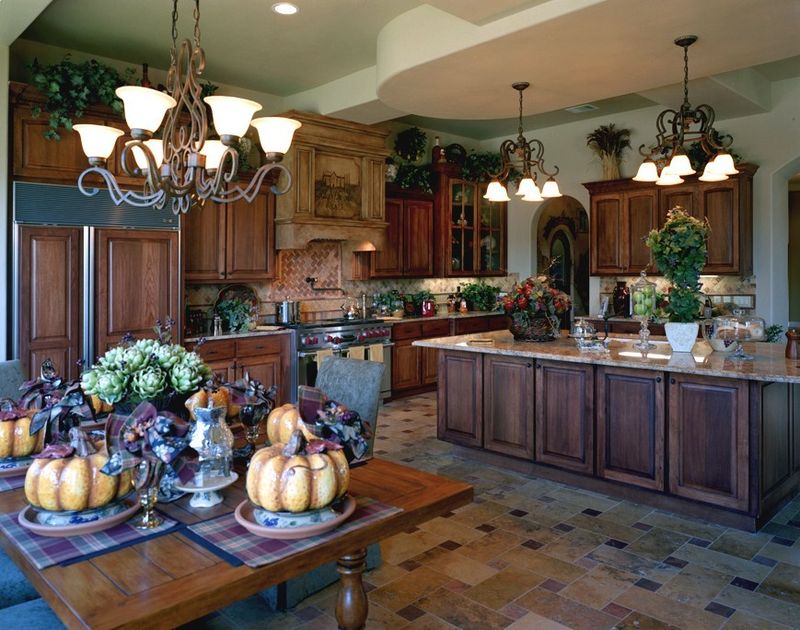
Remember when everyone wanted their kitchen to look like an Italian villa? Grape motifs, faux painted walls, and wrought iron everything dominated kitchens in the early 2000s.
This heavy-handed theme has fallen out of favor with designers who now prefer cleaner, more timeless approaches. Removing dated wall borders, painting over sponge-painted walls, and editing decorative items can help.
If you love Mediterranean warmth, incorporate it through natural materials like terracotta or olive wood rather than themed accessories.
8. Short Upper Cabinets
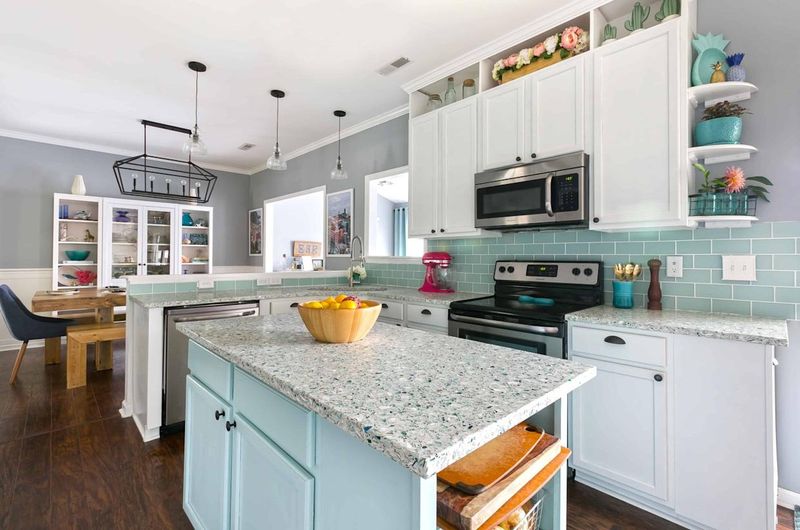
Upper cabinets that stop short of the ceiling create a dust-collecting shelf that serves no purpose except to gather grease and grime. This awkward gap makes ceilings appear lower and wastes valuable storage space.
Extending cabinets to the ceiling creates a custom, built-in look that designers love. Adding crown molding to existing cabinets can help eliminate that awkward gap if replacement isn’t in the budget.
For very high ceilings, consider glass-front display cabinets or decorative molding in the upper section to maintain proportion while eliminating the dust shelf.
9. Visible Refrigerator Clutter

The front and sides of your refrigerator aren’t bulletin boards! Designers cringe at refrigerators plastered with magnets, children’s artwork, schedules, and random papers.
All those colorful items create visual noise in what should be a calming space. Consider creating a dedicated family command center elsewhere for important papers and children’s masterpieces.
If you need reminders visible, try containing them to one small magnetic board in a less prominent area or use the inside of a cabinet door instead.
10. Themed Cabinet Knobs
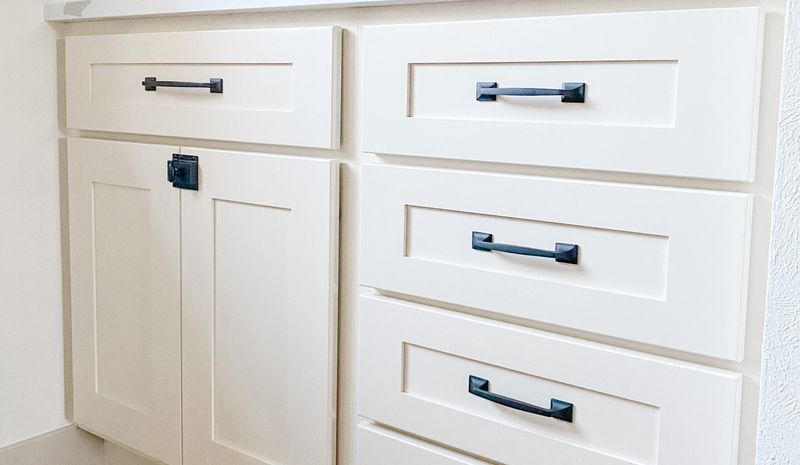
Those cute little vegetable-shaped knobs or beach-themed pulls might seem fun at first, but designers find them kitschy and distracting. Cabinet hardware that’s shaped like chili peppers, seashells, or miniature spoons quickly becomes visually tiring.
Hardware should enhance your cabinets, not compete with them for attention. Classic shapes in quality materials will stand the test of time and complement various styles as your tastes evolve.
Save the themes for easily changeable accessories like tea towels or artwork rather than semi-permanent fixtures.
11. Desk Areas That Become Dumping Grounds

Those built-in desk nooks that were popular in kitchens during the early 2000s rarely function as actual workspaces. Instead, they become magnets for clutter, mail piles, and random household items.
Many homeowners are now converting these unused desks into more practical features like beverage stations, dedicated baking centers, or additional storage. If the desk layout works with your kitchen flow, consider adding organizational systems to help it serve its intended purpose.
Sometimes removing the desk entirely and extending countertop space is the best solution.
12. Solid Surface Backsplashes

When countertop material continues up the wall as a backsplash, designers often find it heavy-handed and uninspired. This treatment, especially with busy granite patterns, can overwhelm the eye and make the kitchen feel dated.
A contrasting backsplash creates visual interest and helps break up the monotony. Even simple subway tiles or a painted glass backsplash can add personality while complementing your countertops.
If you’re stuck with a solid surface backsplash, consider adding open shelving or artwork above it to create a focal point that draws attention away from it.
13. Open Shelving
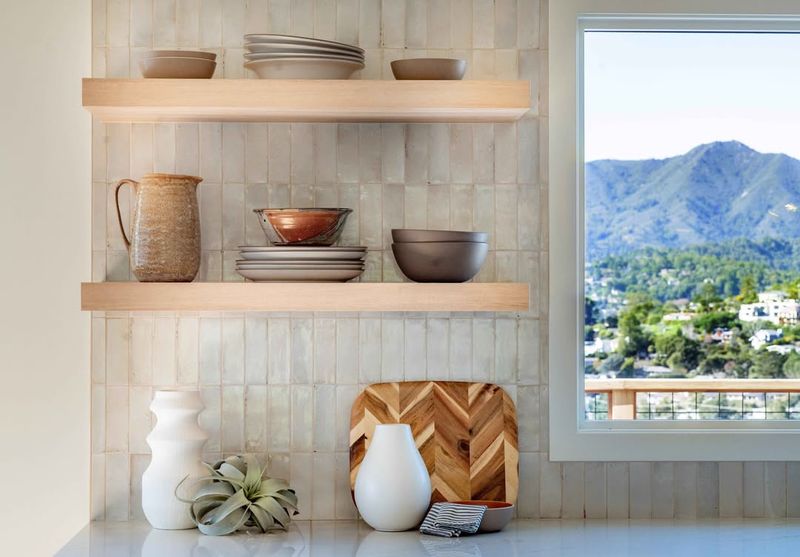
Designers absolutely love the airy, open feel that floating shelves bring to a kitchen. They break up wall-to-wall cabinetry and create opportunities to display beautiful dishware, plants, or cookbooks that add personality to your space.
The key to successful open shelving is curation – displaying only items that are both functional and attractive. Think of each shelf as a small, intentional vignette rather than pure storage.
For practicality, keep everyday items on lower shelves and display pieces that aren’t used as frequently on higher shelves to minimize dust concerns.
14. Statement Range Hoods
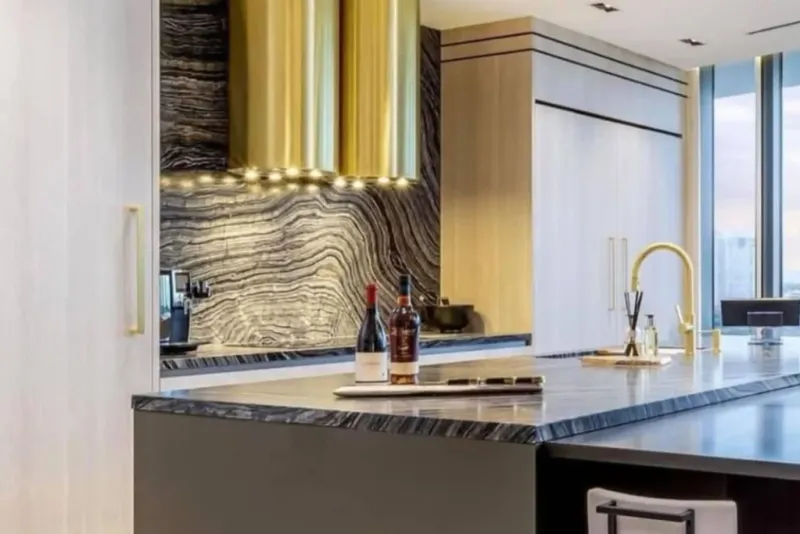
Gone are the days of hiding range hoods! Designers now embrace them as sculptural focal points that anchor the cooking area. A beautiful copper, brass, or custom wood hood creates a stunning centerpiece that elevates the entire kitchen.
The range hood presents an opportunity to introduce a different material or finish that complements your overall design. Even in minimalist kitchens, a sleek, architectural hood can add just the right amount of visual interest.
When planning a kitchen renovation, allocating budget for a statement hood can yield significant design impact.
15. Mixed Metals
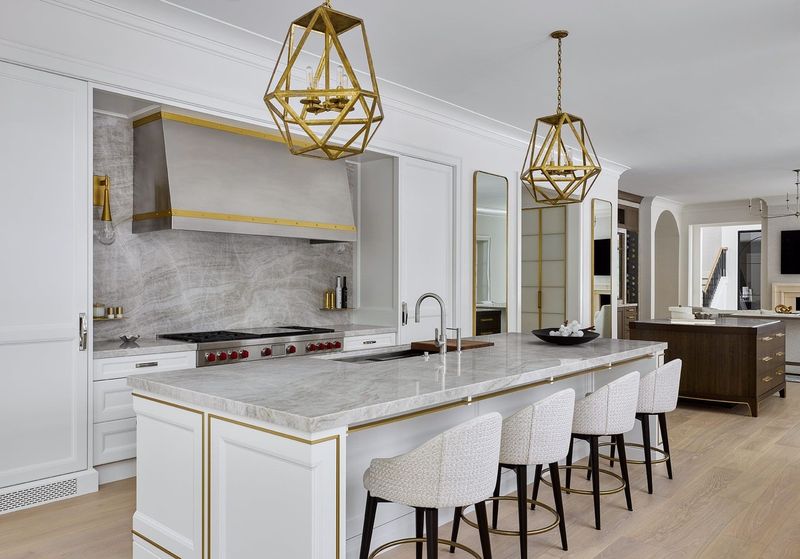
Forget the old rule about matching all your metal finishes! Designers now enthusiastically mix metals like brass, nickel, and matte black to create depth and interest in kitchen designs.
The trick to successful mixing is intention – choose a dominant metal for major elements like faucets and cabinet hardware, then introduce a secondary finish for lighting or accessories. Think of metals like a coordinated outfit rather than a uniform.
For best results, limit your palette to 2-3 complementary metal finishes rather than introducing too many competing elements.
16. Integrated Appliances
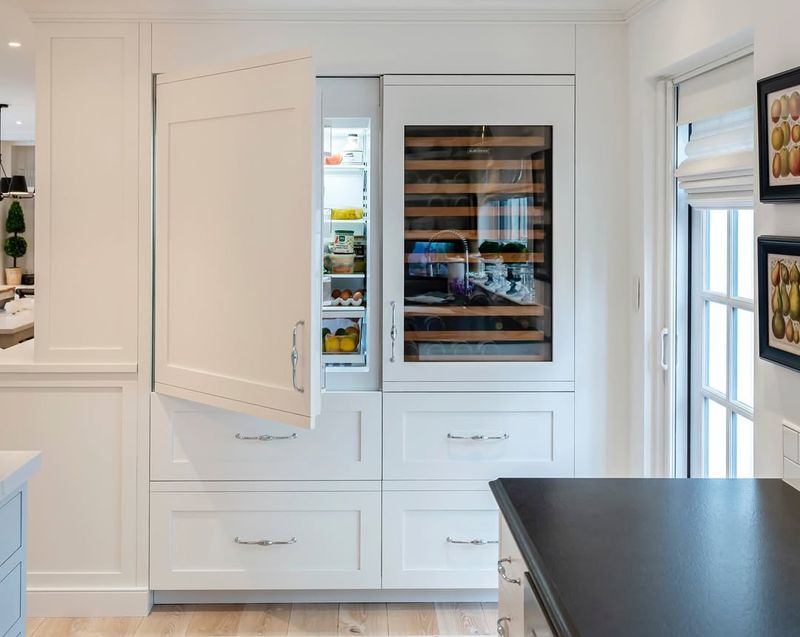
Designers swoon over appliances that disappear into cabinetry, creating a seamless, uninterrupted look. Panel-ready refrigerators, dishwashers, and even coffee machines that blend perfectly with surrounding cabinets create a custom, high-end appearance.
This approach reduces visual clutter and allows other design elements to shine. The effect is particularly striking in smaller kitchens where visible appliances might otherwise dominate the space.
Even partially integrated options, like refrigerator drawers tucked into an island, can add both function and sleek style to your kitchen design.
17. Touchless Faucets
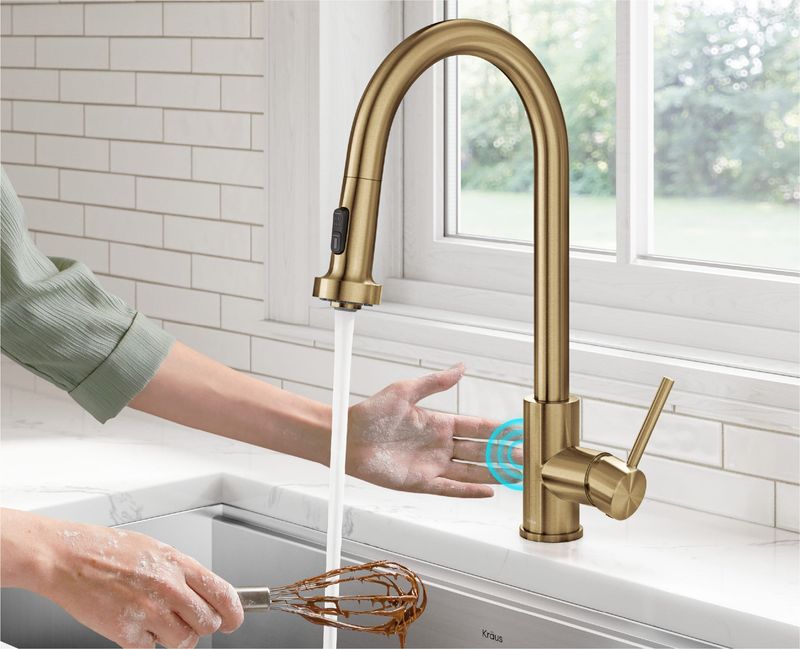
Smart, touchless faucets have won designers’ hearts for combining practicality with sleek aesthetics. Being able to turn water on with a wave when your hands are covered in cookie dough isn’t just convenient – it’s life-changing!
Modern versions have overcome earlier reliability issues and now offer consistent performance with minimal maintenance. Many now include temperature indicators and precise flow control for the perfect user experience.
This technology also supports sustainability by reducing water waste, as the water runs only when needed rather than while you’re soaping up.
18. Drawer Organizers
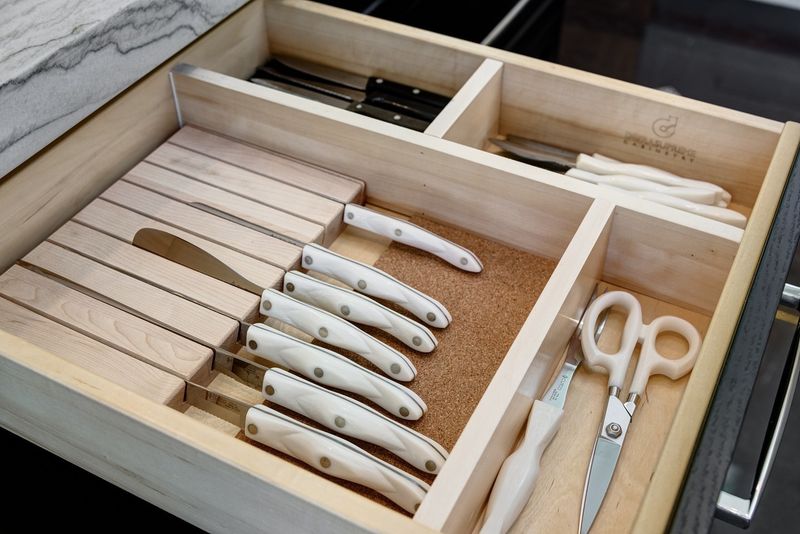
Nothing makes a designer’s heart sing like pulling open a drawer to find everything perfectly organized! Custom drawer inserts for utensils, spices, knives, and cooking tools maximize efficiency and minimize frustration when cooking.
Beyond the standard silverware organizer, designers love specialized solutions like vertical dividers for baking sheets, adjustable pegs for plates, and dedicated spaces for plastic container lids.
Even in older kitchens, adding aftermarket organizers can transform chaotic drawers into functional storage that makes everyday cooking more enjoyable.
19. Microwave Drawers

Tucked neatly into lower cabinetry, microwave drawers are winning major points with kitchen designers. Unlike their over-the-range counterparts, these sleek units preserve valuable counter space while remaining easily accessible.
The pull-out drawer design makes it safer to handle hot foods since you’re not lifting them above chest height. They’re also installed at a height that works well for most family members, including children and those with mobility concerns.
As an added bonus, these units free up the range hood area to become a design focal point rather than an afterthought.
20. Pot Fillers

Once considered a luxury, pot fillers have become a designer favorite for both functionality and visual appeal. These articulating faucets mounted above the range eliminate the need to carry heavy water-filled pots from sink to stove.
Beyond pure practicality, pot fillers add an architectural element that signals a serious cooking space. They’re available in various finishes to complement your other fixtures or stand out as a statement piece.
Even if you’re not regularly filling massive pasta pots, they’re handy for adding water to a skillet or filling the coffee maker.
21. Oversized Islands
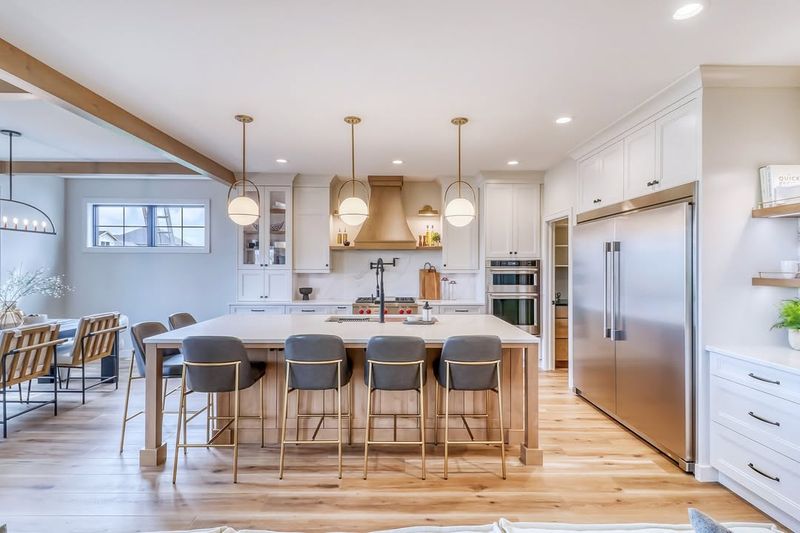
Generous kitchen islands have stolen designers’ hearts as the ultimate multifunctional centerpiece. Beyond mere prep space, these islands serve as gathering spots, homework stations, buffet surfaces, and the natural heart of the home.
The most successful designs incorporate varied seating heights, integrated storage, and consideration of workflow around all sides. Many designers recommend at least 36 inches of clearance on all sides for comfortable movement.
For maximum impact, consider a contrasting color or material for your island to create a furniture-like focal point in the room.
22. Farmhouse Sinks
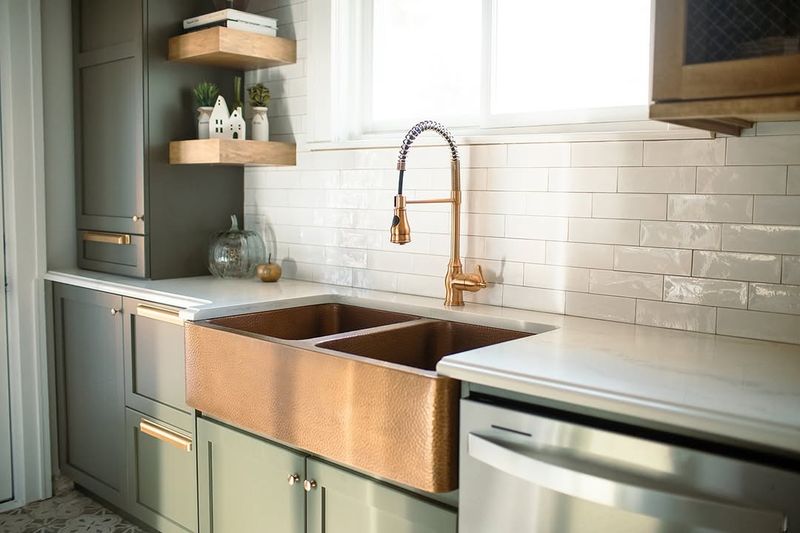
Despite being around for centuries, farmhouse (or apron-front) sinks continue to charm designers with their combination of practicality and character. Their deep basin and forward position make dishwashing more comfortable by eliminating the countertop reach.
While white fireclay remains popular, designers are embracing new materials like hammered copper, natural stone, and even stainless steel in the farmhouse profile. The exposed front creates an opportunity for a textural focal point in the kitchen.
Their generous size accommodates large pots and baking sheets with ease, making cleanup of oversized items much more manageable.



